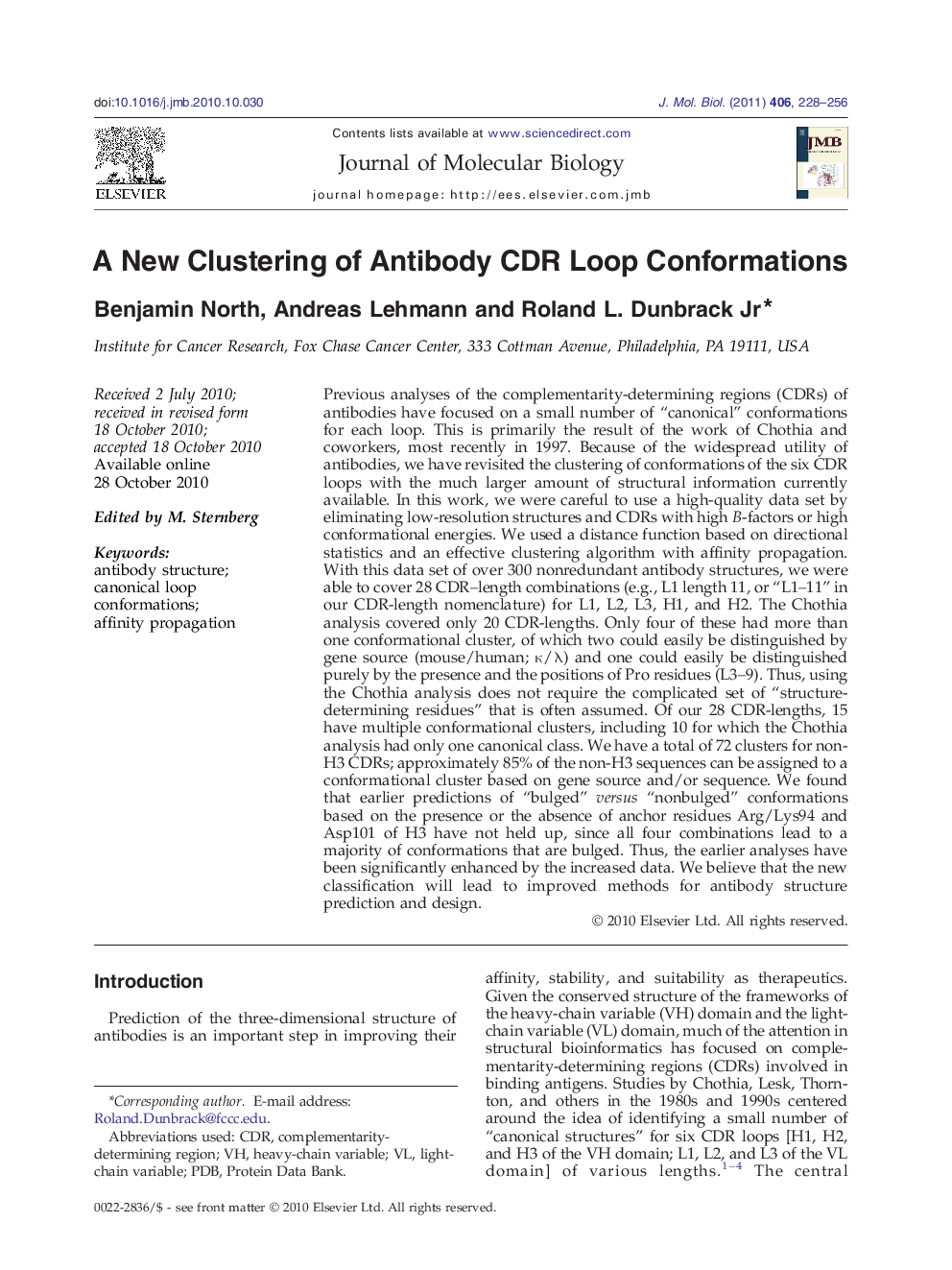| کد مقاله | کد نشریه | سال انتشار | مقاله انگلیسی | نسخه تمام متن |
|---|---|---|---|---|
| 2185719 | 1096004 | 2011 | 29 صفحه PDF | دانلود رایگان |

Previous analyses of the complementarity-determining regions (CDRs) of antibodies have focused on a small number of “canonical” conformations for each loop. This is primarily the result of the work of Chothia and coworkers, most recently in 1997. Because of the widespread utility of antibodies, we have revisited the clustering of conformations of the six CDR loops with the much larger amount of structural information currently available. In this work, we were careful to use a high-quality data set by eliminating low-resolution structures and CDRs with high B-factors or high conformational energies. We used a distance function based on directional statistics and an effective clustering algorithm with affinity propagation. With this data set of over 300 nonredundant antibody structures, we were able to cover 28 CDR–length combinations (e.g., L1 length 11, or “L1–11” in our CDR-length nomenclature) for L1, L2, L3, H1, and H2. The Chothia analysis covered only 20 CDR-lengths. Only four of these had more than one conformational cluster, of which two could easily be distinguished by gene source (mouse/human; κ/λ) and one could easily be distinguished purely by the presence and the positions of Pro residues (L3–9). Thus, using the Chothia analysis does not require the complicated set of “structure-determining residues” that is often assumed. Of our 28 CDR-lengths, 15 have multiple conformational clusters, including 10 for which the Chothia analysis had only one canonical class. We have a total of 72 clusters for non-H3 CDRs; approximately 85% of the non-H3 sequences can be assigned to a conformational cluster based on gene source and/or sequence. We found that earlier predictions of “bulged” versus “nonbulged” conformations based on the presence or the absence of anchor residues Arg/Lys94 and Asp101 of H3 have not held up, since all four combinations lead to a majority of conformations that are bulged. Thus, the earlier analyses have been significantly enhanced by the increased data. We believe that the new classification will lead to improved methods for antibody structure prediction and design.
Graphical AbstractFigure optionsDownload high-quality image (85 K)Download as PowerPoint slideResearch Highlights
► Clustering of CDR conformations from over 300 antibody structures.
► Modern clustering method using affinity propagation in dihedral angle space.
► Most of Chothia's 25 canonical conformations confirmed.
► A total of 72 clusters identified for use in antibody structure prediction and design.
Journal: Journal of Molecular Biology - Volume 406, Issue 2, 18 February 2011, Pages 228–256